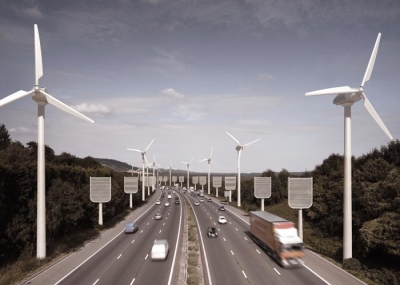
It is now common knowledge that carbon dioxide (CO2) emission is among the biggest threats to our planet. The carbon dioxide we release is changing the climate, the wind and precipitation patterns, acidifying the oceans, melting glaciers and ice sheets, increasing the frequency of wildfires and raising sea levels. Scientists are racing to find a way to lower the global temperature by removing CO2 from the air.
Planting more trees is among the immediate and natural solutions that anyone can think of, because they soak up CO2 from the atmosphere. The more trees we plant, the less heat-trapping carbon pollution in the air. But it is not as simple as it sounds. To soak up the huge amount of CO2 in our atmosphere, we have to plant millions of trees. Planting so many trees require a lot of water. We also need land to grow food for an increasing global population, so there’s a limit to how much forestry we can fit on the planet. Thus scientists are now looking to technology to ‘create artificial trees’ to carry out the job of real trees.
Artificial trees
Various research organisations have been working on creating fake leaves and artificial trees – of course not the kind that decorate living rooms and lobbies, but the ones that can solve our climate problems. One among them is the brainchild of Columbia University Earth Institute scientists Klaus Lackner and Allen Wright. Their ‘Synthetic Tree or Fake Tree’ prototype is on display at the Our Future Planet temporary exhibition at the Science Museum. London.
These trees don’t look like natural trees – they don’t have leaves or branches. One of their earliest tree designs looked like a goal post, while the exhibit at the London museum looks like a box. They are simply machines that function like a tree – absorbing carbon dioxide out of the atmosphere.
The leaves of these fake trees are coated in a resin that contains sodium carbonate, which pulls CO2 out of the air and stores it as a bicarbonate (baking soda) on them. Subsequently the CO2 captured can be either sequestered in underground geological formations or sold for industrial use. The leaves are said to be 1,000 times more efficient than true leaves. These trees can be placed indoor or anywhere as they do not need sunlight for photosynthesis.
Unlike a real tree, which, absorbs 10 tons of carbon in its lifetime, these mechanical trees may each collect up to 32 tons of CO2 in a single year-the equivalent of what seven passenger vehicles emit annually. Ten million of these trees could remove 3.6 billion tonnes of CO2 a year-equivalent to about 10% of our global annual emissions.
A single tree would initially cost $20,000. According to Klaus Lackner, as production of these trees increases, price would fall, making the initiative a promising solution to climate change.
Picture Credit : Google




